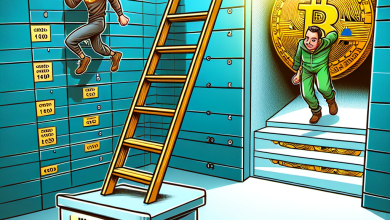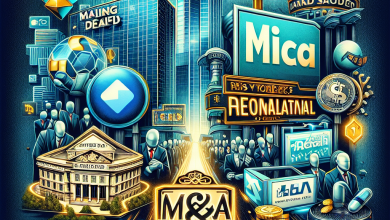Financial crisis: Deutsche Bank’s recent slump
They were the fire accelerator of the global financial crisis in 2008 – now they are once again the focus of interest due to the recent price slump at Deutsche Bank: Credit Default Swaps (CDS). With these tradable credit default insurances, creditors can protect themselves against the bankruptcy of a company, bank or state. A counterparty undertakes to assume the risk of default for a risk premium if the debtor or debtors actually go bankrupt. At Deutsche Bank, however, the question has been raised in the past few days: have speculators pushed up the premiums for credit default insurance from Germany’s largest financial institution in order to cause the share price to crash?
The idea behind CDS was originally completely different. Namely: Those who can reliably secure themselves are more likely to grant loans, and this gives debtors better access to capital. The price development of CDS in a functioning market can also help investors to assess the creditworthiness of borrowers better and faster than rating agencies.
The products were introduced in the early 1990s. The market grew steadily and received a growth spurt in the run-up to the great financial crisis. According to statistics from the Bank for International Settlements (BIS), between the end of 2006 and the end of 2007 the volume of CDS doubled to a nominal value of more than $61 trillion. This insured loss amount of loans exceeded the global economic performance at that time.
The rapid growth happened above all in the unregulated and non-standardized area of the financial markets. CDS were used increasingly by hedge funds and banks, for ever greater speculation. In the process, their original character changed: from insurance they became bets on the collapse of the debtor.
The last major financial crisis began in 2007 with violent shocks in the speculatively bloated US real estate market. As interest rates rose, the housing bubble burst, leading to a wave of mortgage defaults. As a result, bundles of securities worth many billions of dollars suddenly became worthless. In the run-up to the crisis, banks had bundled loans secured by mortgages (mortgage-backed securities, MBS) from borrowers with poor credit ratings with those from solid borrowers, gave them a good rating and sold the bundles on the capital market. CDS had also been issued for such MBS bundles.
The defaults of MBS triggered high CDS payments and set a chain reaction in motion: Even parties that had to answer for the debts were facing bankruptcy at the time. An example of this is the collapse of what was then the world’s largest insurer, AIG, which turned a very big wheel on the CDS market. At its peak, AIG guaranteed around $600 billion in debt. This turned the insurer into a ticking time bomb, which then also exploded.
More security
The size of the CDS market and the role it played in the financial crisis led to calls for more transparency and resilience. In fact, the market has gone through a number of important changes since then. Its volume has already shrunk significantly. Notional amounts outstanding fell from $61,200 billion at the end of 2007 to $9,300 billion in mid-2022, according to the BIS.
Also read: The next crash is bound to come
The most important reforms after the crisis included the increased standardization of contracts, extended reporting requirements and clearing and settlement via central offices with margin requirements for market participants. Credit insurance is often no longer designed and concluded bilaterally, but via a clearing house. If a market participant were to tip over, the clearing house would be ready for the open claims – with the money that it had previously collected as collateral. After all, the value of an insurance company would be zero if it were unable to pay out in the event of a claim.
The proportion of transactions processed via central counterparties is now almost two-thirds of the total volume. This has significantly reduced the so-called counterparty risk. However, central processing only prevents the market from collapsing if a large seller of credit insurance, like AIG at the time, goes under.
If you want to speculate with CDS on the bankruptcy of a debtor, you can continue to do so. And there is still a market in which bilateral contracts are concluded that do not meet the standards required for central processing. Despite this, the market has been running calmly for the past few years – until the earthquake in US regional banks and the forced marriage of Credit Suisse and UBS. Now it’s suddenly back to CDS and the role they’re playing in the recent turmoil.
Deutsche Bank in particular came into focus here: their insurance premiums against payment default skyrocketed. This increase triggered a slide in prices for Deutsche Bank shares, but also for other European bank stocks.
Also read: No financial crisis, but turnaround in growth and interest rates
The annual premium for insuring against default on Deutsche Bank’s subordinated debt rose sharply, peaking at over 800 basis points. Within a few days, this CDS price had increased eightfold. In order to insure ten million euros, policyholders had to pay a premium of over 800,000 euros. Andrea Enria, head of banking supervision at the European Central Bank (ECB), sees this as a worrying sign of how easily investors can be spooked. With just a few million euros invested in CDS, billions could be moved.
Enria rightly states that central clearing for CDS would improve transparency. The developments of the last few years go in this direction and confirm Enria’s assessment. But: Perhaps the creditors of Deutsche Bank and other credit institutions actually felt a greater need for security.
There was no alternative to the takeover of Credit Suisse by UBS orchestrated by the Swiss authorities. Still, there was one thing about the deal that worried investors and possibly sparked the storm, which has since subsided: Credit Suisse shareholders may only get pennies for their shares, but they won’t go away empty-handed. By contrast, holders of Swiss bank contingent convertible bonds, known as CoCo bonds or AT1 bonds, are starving. You lose more than 16 billion Swiss francs.
Normally, even unsecured creditors rank above shareholders in a company’s capital structure. Now, of course, the owners of AT1 bonds are asking themselves the question of the actual value of their investment. If the risk profile of an investment deteriorates, the need for protection logically increases. After all, it is a market with an estimated volume of 260 billion dollars.
Deutsche Bank has also issued AT1 bonds worth billions. The AT1 market has been hit by the Credit Suisse bailout. Investors are asking themselves how banks can strengthen their equity in the future without massively diluting their shareholders’ shares. That would also be an explanation for rising CDS premiums and falling share prices at banks. It doesn’t always have to be speculation.
Also read: Credit Default Swaps – Questionable credit insurance





